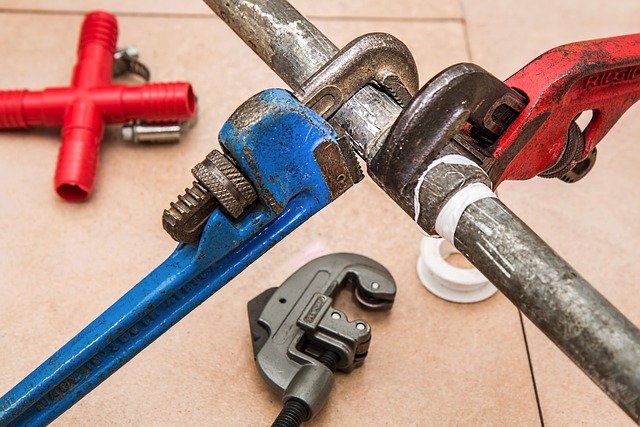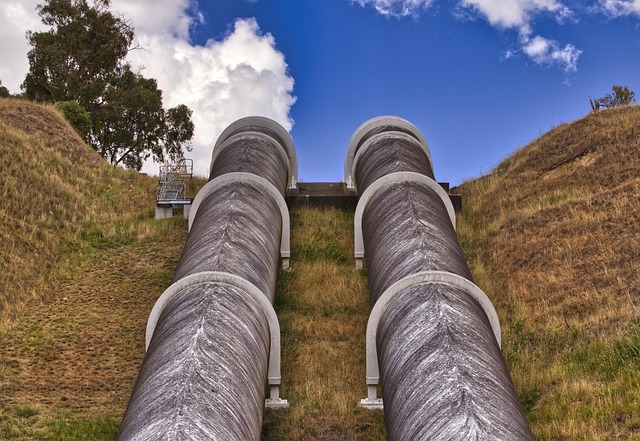Homeowners can prevent costly repairs and maintain a comfortable living space by being vigilant for key indicators of pipe leaks and condensation. Unusual noises, water stains, mold growth, and spikes in water bills suggest potential leaks, while foggy windows and water droplets on cold surfaces indicate high moisture levels from condensation. Early detection through Pipe Leak Detection Tips involves visual and auditory inspections, monitoring water pressure and bills, and proper ventilation. Swift leak repairs, insulation, and regular maintenance of cooling systems help manage condensation issues, leveraging these tips for effective prevention.
Is it a pipe leak or condensation causing those mysterious droplets on your walls? Distinguishing between these two common plumbing issues is crucial for efficient problem-solving. This article equips you with essential knowledge and practical tips, such as understanding the signs, implementing effective detection methods, and adopting prevention strategies for both leaks and condensation. Master these Pipe Leak Detection Tips to address these problems head-on.
- Understanding Common Signs of Pipe Leaks and Condensation
- Practical Methods for Pipe Leak Detection
- Addressing Condensation Issues: Prevention and Remediation Strategies
Understanding Common Signs of Pipe Leaks and Condensation

Understanding Common Signs of Pipe Leaks and Condensation
One of the most effective Pipe Leak Detection Tips is to be aware of unusual noises, such as dripping or hissing sounds coming from your pipes. These could indicate a leak, especially if they’re persistent and seemingly random. Other telltale signs include water stains on ceilings or walls, mold growth in unexpected areas, or a sudden spike in your water bills without any apparent reason. Condensation, while often overlooked, can also cause similar issues. Look for foggy windows, especially during colder months, as this is a clear sign of excessive moisture in the air. Additionally, you might notice condensed water droplets on pipes and cold surfaces within your home.
Practical Methods for Pipe Leak Detection

Detecting a pipe leak can be tricky, but with the right tools and some practical methods, it becomes more manageable. One effective approach is to visually inspect your pipes for any signs of damage or moisture. Look for dripping water, wet spots, or corrosion around joints and fittings. These visible indicators often point directly to a leak.
Another useful Pipe Leak Detection Tip involves listening carefully for unusual noises coming from your pipes. Leaks can create subtle sounds like a persistent drip or a low-frequency hiss. Moreover, checking for sudden increases in water pressure or unexpected spikes in your water bill can also help identify leaks. Regular maintenance and immediate attention to these signs are key to preventing minor issues from turning into major, costly problems.
Addressing Condensation Issues: Prevention and Remediation Strategies

Condensation can be a common issue, especially in areas with high humidity or during seasonal changes. To prevent and remediate condensation problems, start by improving ventilation. Ensure proper air circulation throughout your space by opening windows (when the outdoor temperature allows) and using exhaust fans in kitchens and bathrooms.
Regularly inspect and clean air conditioning units and humidifiers to maintain optimal performance. Address any leaks or moisture sources immediately as they can exacerbate condensation issues. Implement insulation strategies around pipes and potential problem areas to minimize temperature variations that contribute to condensation formation. Remember, early detection of both pipe leaks and excessive condensation is key to preventing water damage and maintaining a comfortable living environment using effective Pipe Leak Detection Tips.
Identifying whether a plumbing issue is a pipe leak or condensation is crucial for effective problem-solving. By understanding the common signs, employing practical detection methods, and implementing prevention strategies, homeowners can efficiently address these problems. Remember, prompt action on pipe leaks is essential to avoid damage, while managing condensation ensures a comfortable living environment. With these Pipe Leak Detection Tips, you’re equipped to navigate through both scenarios, promoting peace of mind and reducing potential costs.
